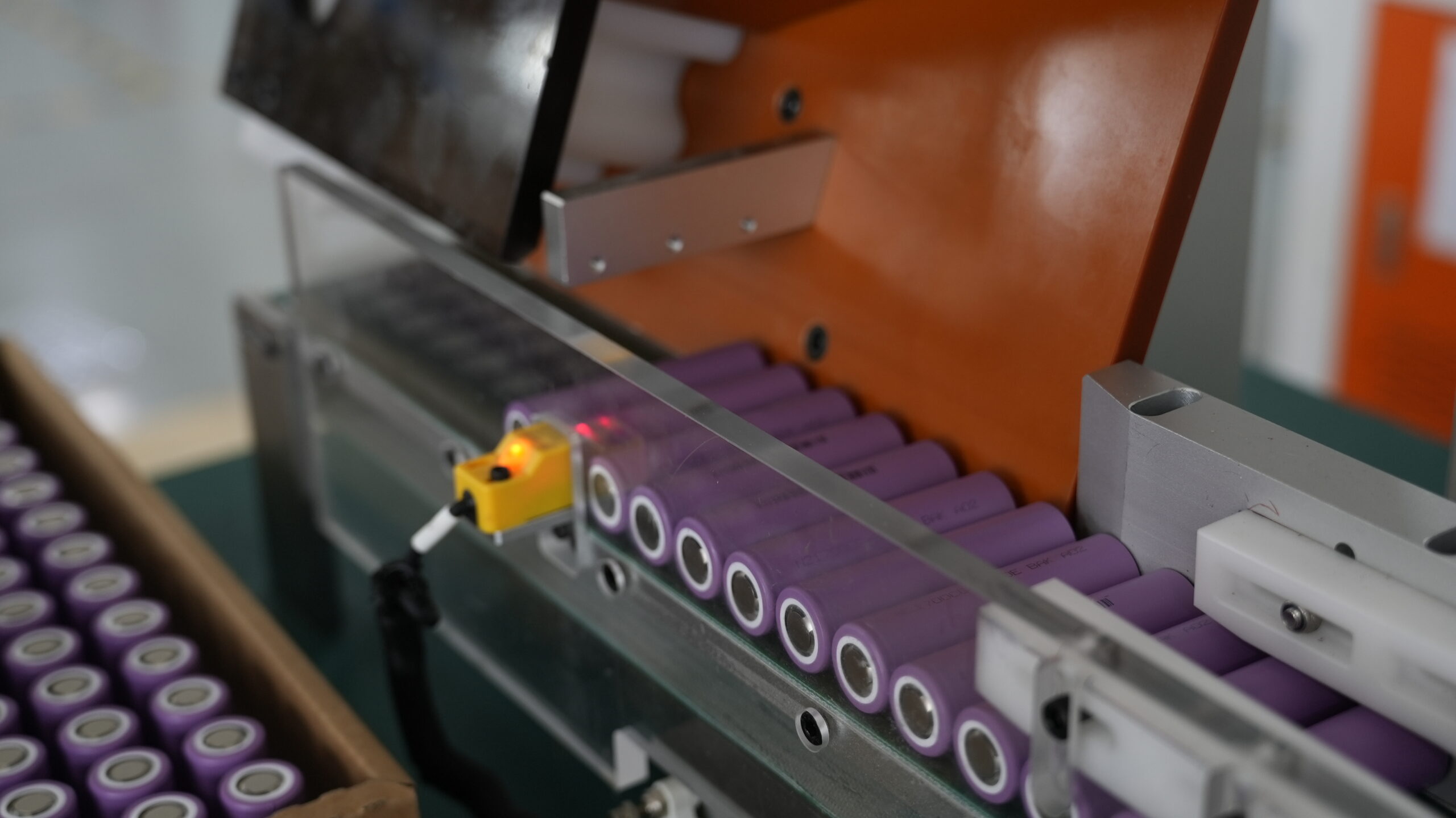
You can extend battery lifespan in remote monitoring devices by using lithium battery packs with careful cycle management and smart monitoring.
Lithium iron phosphate batteries often last between 5 and 15 years, while lithium-polymer batteries average 2 to 5 years.
EcoFlow DELTA Series portable power stations operate for 5–10 years before losing significant capacity.
Strategy | Benefit |
|---|---|
Continuous Monitoring | Detects unsafe conditions and prevents early failure |
Thermal Management | Controls temperature, reduces degradation, and improves safety |
Cell Balancing | Protects each cell and ensures long-term performance |
You should minimize depth of discharge and use battery management systems for real-time data. These steps help you maintain reliable performance in industrial, medical, and security applications.
Key Takeaways
Choose the right lithium battery chemistry to maximize lifespan. Lithium iron phosphate batteries last longer than lithium-polymer options.
Implement continuous monitoring and thermal management to prevent overheating and ensure safe operation. Regular checks can extend battery life.
Minimize depth of discharge by keeping battery levels between 25% and 80%. This practice can significantly increase the number of cycles a battery can deliver.
Utilize a Battery Management System (BMS) for real-time monitoring. A BMS protects against overcharging and maintains balanced cell performance.
Adopt low-power communication protocols to reduce energy consumption. This strategy helps devices operate longer without frequent battery replacements.
Part 1: Battery Lifespan Basics

1.1 Key Factors
You can maximize battery lifespan in remote monitoring devices by understanding the main factors that influence performance and longevity. These factors include:
Battery chemistry
Temperature
Charge and discharge voltage
Current
State of charge
Battery management systems
Manufacturing quality
Battery design
Use cases
Recycling
Regulatory factors
Environmental conditions
Charging cycles
Maintenance
Device power consumption
Battery voltage and current requirements
Self-discharge rate
Usage patterns
High temperatures accelerate battery degradation. Overcharging or deep discharging can cause permanent damage. Fast charging increases internal temperature and may lead to lithium plating, which shortens battery lifespan. Keeping batteries below 30°C helps extend their useful life. You should also avoid extreme temperatures and maintain moderate charge rates to reduce aging.
Tip: Regular monitoring and maintenance help prevent unexpected failures and keep your devices running longer.
1.2 Remote Monitoring Challenges
Remote monitoring devices face unique challenges that impact battery lifespan and reliability. You often deploy these devices in harsh or inaccessible environments, making maintenance difficult. Key challenges include:
Real-time monitoring is essential to detect faults early.
Environmental conditions, such as temperature and humidity, significantly affect battery life.
Regular testing and maintenance are necessary to prevent unexpected failures.
Managing batteries in remote locations is complex due to limited access.
85% of battery system failures result from lack of maintenance or improper management.
Without active monitoring, sudden failures can disrupt operations and cause financial losses.
Remote environmental monitoring units track critical factors like temperature and humidity. Continuous monitoring helps prevent overheating and water damage, both of which can cause battery failures in industrial, medical, and security system applications.
1.3 Chemistry Selection
Selecting the right lithium battery chemistry is crucial for optimizing battery lifespan in remote monitoring devices. The table below compares the most common lithium chemistries used in these applications:
Battery Chemistry | Platform Voltage (V) | Energy Density (Wh/kg) | Cycle Life (cycles) | Typical Lifespan (Years) |
|---|---|---|---|---|
Lithium Thionyl Chloride (Li-SOCl₂) | 3.6 | 420 | 1,000+ | 5 to 10 |
Lithium Manganese Dioxide (Li-MnO₂) | 3.0 | 280 | 500–1,000 | 3 to 5 |
Lithium-Ion Rechargeable | 3.6–3.7 | 150–250 | 500–2,000 | 2 to 5 |
Lithium battery packs are preferred for remote monitoring because they offer long life, high energy density, low self-discharge rates, and reliable operation in extreme environments. Bobbin-type lithium thionyl chloride batteries, for example, perform well in infrastructure, robotics, and industrial monitoring systems where long-term reliability is critical.
Part 2: Charge/Discharge Strategies

2.1 Cycle Management
You can extend the battery lifespan of remote monitoring devices by managing charge and discharge cycles with precision. Each full cycle—charging from 0% to 100% and then discharging back to 0%—counts toward the total cycle life of a lithium battery pack. Reducing the number of full cycles helps you get more operational years from your devices.
Best Practice | Description |
|---|---|
Manage Charging Cycles | Track and control each charge/discharge event to avoid unnecessary full cycles. |
Adopt Partial Cycles | Use partial charges and discharges to reduce wear and extend battery lifespan. |
Charge to 80% | Limit charging to about 80% to lower cell stress and slow down capacity loss. |
Avoid Deep Discharge | Keep battery levels above 25% to prevent damage and maintain long-term performance. |
Tip: You should schedule regular, partial charging sessions instead of waiting for batteries to fully discharge. This approach reduces stress on the cells and helps maintain consistent performance in industrial and security system deployments.
2.2 Depth of Discharge
Depth of discharge (DoD) measures how much energy you remove from a battery during each cycle. Lowering the DoD can dramatically increase the number of cycles a lithium battery pack can deliver. For example, if you only use 30% of the battery’s capacity before recharging, you can achieve over four times as many cycles compared to using the full capacity each time.
Depth of Discharge (DoD) | Number of Cycles |
|---|---|
100% | 4,000 |
30% | 16,000+ |
You should avoid deep discharges whenever possible. Keeping your devices within a moderate charge range—such as between 25% and 80%—reduces chemical wear and extends battery lifespan. This strategy is especially important for remote monitoring units in medical, robotics, and infrastructure applications, where reliability and long service intervals are critical.
Avoiding full discharges minimizes battery wear.
Keeping your device in the mid-range charge levels reduces the number of full cycle counts, which in turn extends the life of the battery.
Regular topping up is far better for lithium-ion batteries than letting them hit rock bottom.
Note: Micro-cycles, or frequent small charges and discharges, have a negligible or even positive effect on lithium-ion cell aging. Cells managed with micro-cycles can last nearly twice as long as those subjected to only deep cycles.
2.3 C-Rate Optimization
C-rate describes how quickly you charge or discharge a battery relative to its capacity. High C-rates can generate excessive heat, which damages the battery’s internal structure and shortens its lifespan. You should optimize the C-rate to balance performance and longevity.
High C-rates, especially above 1C, produce more heat and accelerate chemical wear.
Lower C-rates are more efficient and help prolong battery life.
Adjusting the C-rate to match your application’s needs ensures reliable operation and reduces maintenance costs.
Rate Type | Recommended | Maximum |
|---|---|---|
Charge Rate | 0.2C | 0.5C |
Discharge Rate | 0.5C | 1C |
You should select charge and discharge rates that fit your device’s requirements. For most remote monitoring devices, charging at 0.2C and discharging at 0.5C provides a good balance between efficiency and battery lifespan. This approach supports long-term reliability in industrial, security, and medical monitoring systems.
Callout: Proper C-rate optimization not only extends battery lifespan but also improves safety and reduces the risk of overheating in mission-critical environments.
Part 3: Battery Health Monitoring
3.1 BMS Functions
A Battery Management System (BMS) serves as the backbone of safety and reliability for lithium battery packs in remote monitoring devices. You rely on a BMS to monitor voltage, current, temperature, and state of charge (SOC) in real time. The system protects against over-current, over-voltage, under-voltage, and temperature extremes. It balances cell charging, which prevents uneven wear and extends operational life. Thermal management features help prevent overheating and thermal runaway, which are critical in medical, robotics, and industrial applications.
Function | Description |
|---|---|
Monitoring | Tracks voltage, current, temperature, and SOC for performance evaluation. |
Protection | Prevents over-current, over-voltage, under-voltage, and temperature extremes. |
Balancing | Maintains even charge across all cells to enhance effectiveness and durability. |
Thermal Management | Monitors temperature and implements cooling strategies to prevent overheating and thermal runaway. |
Temperature sensors inside the battery pack provide real-time data. The BMS compares these readings to safe thresholds and can shut down the battery if temperatures rise too high. This workflow ensures stability and safety, especially in environments where maintenance is difficult.
3.2 State of Charge (SOC)
Accurate SOC measurement is essential for managing lithium battery packs in remote monitoring devices. You can use several methods to determine SOC:
Open Circuit Voltage (OCV) relies on voltage readings but is less effective for lithium-ion batteries.
Coulomb Counting tracks current flow for precise SOC calculations, often with errors below 1%.
Kalman Filter algorithms predict and correct SOC estimates using real-time data.
Adaptive SOC algorithms learn from usage patterns to improve accuracy.
Coulomb Counting combines with voltage checks for better precision.
AI and IoT technologies enable real-time SOC monitoring and optimization.
SOC monitoring gives you real-time data on battery charge levels. This helps prevent deep discharge and over-discharge, which can damage cells. Configurable alarms alert you to low SOC, allowing timely intervention. The BMS can automatically disconnect the battery at critical low SOC levels, protecting the battery and extending Battery Lifespan.
3.3 Predictive Maintenance
Predictive maintenance uses data analytics and real-time monitoring to identify battery degradation before failure occurs. You benefit from continuous tracking of SOC, temperature, and charge-discharge cycles. This approach allows you to predict remaining useful life and schedule maintenance only when needed.
Early detection of temperature issues enables corrective actions.
Active charge control prevents overcharging and heat build-up.
Reduced downtime and extended battery life result from continuous health monitoring.
Predictive analytics can forecast battery replacement needs. You can detect potential issues early, replace batteries proactively, and optimize maintenance schedules. This strategy improves battery reliability in security systems, infrastructure, and medical monitoring, while reducing costs and emergency repairs.
Part 4: System Optimization
4.1 Low-Power Protocols
You can significantly extend battery lifespan in remote monitoring devices by selecting low-power communication protocols. These protocols reduce energy consumption and allow devices to operate autonomously for longer periods, which is essential in industrial, medical, and security system deployments. You should consider the following options:
LoRaWAN: Offers long-range coverage up to 15 km in rural areas and operates at very low power. Suitable for infrastructure and environmental monitoring.
Bluetooth Low Energy (BLE): Designed for short-range communication with minimal power usage. Ideal for medical devices and robotics requiring frequent data exchange.
Zigbee: Effective for sensor networks and home automation with low data rates and power consumption.
RS485: Wired protocol that provides energy-efficient local communication in industrial settings.
LPWAN Protocols: Enable long-range, low-power communication for applications with infrequent updates, such as smart agriculture and remote infrastructure monitoring.
Low-power protocols help you reduce battery replacements and maintenance costs, especially in large-scale deployments. Devices using these protocols can operate in remote areas where battery replacement is impractical.
4.2 Hardware/Firmware Efficiency
Optimizing hardware and firmware design is crucial for energy efficiency in lithium battery-powered remote monitoring systems. You can achieve better performance and longer battery life by focusing on the following strategies:
Strategy | Description |
|---|---|
Low-Power Microcontrollers | Select MCUs like ARM Cortex-M series for low power consumption and high-speed processing. |
Energy-Efficient Communication | Use modules supporting LoRaWAN or NB-IoT for reduced power usage in long-range applications. |
Power Management Techniques | Implement sleep states and low-power modes to conserve energy during inactivity. |
Efficient Firmware Integration | Streamline firmware to minimize processing overhead and enhance data transmission efficiency. |
You should refactor firmware to minimize active cycles and maximize sleep time. Fine-tune wireless protocol parameters, such as lowering transmission power in BLE, to reduce energy costs. Switching regulators provide better voltage efficiency than linear regulators, further improving battery performance.
Tip: Identifying and optimizing code paths that consume excessive cycles can help you achieve substantial energy savings.
4.3 Modular Design
Modular design simplifies battery maintenance and replacement in remote monitoring systems. You benefit from advanced diagnostics, predictive analytics, and real-time monitoring of critical parameters. Modular systems allow you to scale deployments easily and maintain continuous operation.
Feature | Description |
|---|---|
Hot-swappable components | Upgrade or replace modules without system downtime, ensuring uninterrupted monitoring. |
Fault-tolerant system | Intelligent modules take themselves offline if issues arise, maintaining continuous power. |
Self-diagnostic | Built-in diagnostics simplify maintenance and troubleshooting, reducing service time. |
You can deploy modular lithium battery packs in medical, industrial, and security applications to improve reliability and reduce operational costs. Modular architecture supports predictive analytics, helping you prevent failures before they occur.
Modular design supports sustainability by enabling easy upgrades and reducing electronic waste. For more on sustainable system-level optimization, see our sustainability approach.
Part 5: Safety & Reliability
5.1 Thermal Management
You must control battery temperature to ensure safe and reliable operation in remote monitoring devices. Overheating can cause rapid degradation, reduce lifespan, and increase safety risks. You can use several thermal management techniques to protect lithium battery packs, especially in demanding sectors like medical, robotics, and industrial infrastructure.
Technique | Description |
|---|---|
Liquid Cooling | Handles higher power demands and regulates temperature, ideal for high-performance applications. |
Temperature Uniformity | Maintains even temperature across cells, preventing localized overheating. |
Battery Management System (BMS) | Monitors cell temperatures and initiates safety protocols to prevent overheating. |
Thermal Insulation Materials | Includes heat plates and phase change materials to control heat buildup and shield from extremes. |
Fire-Extinguishing Capsules | Releases fire-suppressing agents during thermal runaway for added safety. |
Tip: You should select thermal management solutions based on your device’s operating environment and power requirements. For example, liquid cooling suits high-power robotics, while phase change materials work well in infrastructure monitoring.
5.2 Overcurrent Protection
You need robust overcurrent protection to safeguard lithium battery packs and connected devices. Protection circuits detect excessive current and interrupt the flow, which prevents overheating and damage. This process enhances safety and reliability in critical applications.
Overcurrent protection prevents excessive current during charging or discharging.
It reduces the risk of overheating and damage to batteries and devices.
The Battery Management System (BMS) keeps the battery within safe operating limits.
The BMS continuously monitors current in the battery pack.
If current exceeds a safety limit, the BMS acts immediately.
Actions may include limiting current, disconnecting the circuit, or triggering an alarm.
Callout: You should always verify that your remote monitoring systems include advanced BMS features for overcurrent protection, especially in medical and security applications.
5.3 Standards Compliance
You must comply with international safety standards to ensure reliability and acceptance of lithium battery packs in remote monitoring devices. Certification demonstrates that your systems meet strict safety and environmental requirements, which is essential for deployment in high-stakes environments.
Standard | Purpose |
|---|---|
UN38.3 | Mandatory for air and sea transport |
CE | Required for access to EU markets |
UL 2054 | Essential for U.S. consumer safety compliance |
IEC 62133 | Widely accepted in Asia and global electronics |
RoHS | Restricts hazardous materials for environment |
Compliance ensures your devices are reliable and safe.
Adhering to standards builds trust with stakeholders in medical, industrial, and security sectors.
Certification provides assurance for users in critical applications.
Note: You should always verify certifications before deploying lithium battery packs in remote monitoring systems. This step helps you meet regulatory requirements and maintain operational integrity.
You can maximize Battery Lifespan in remote monitoring devices by combining smart charge/discharge management, advanced BMS, and system-level optimization. Use partial cycles, optimize C-rates, and adopt active balancing to improve reliability and reduce maintenance. Recent studies show that bidirectional pulse current and systematic cycle optimization double amp-hour throughput and enhance durability.
Approach | Benefit |
|---|---|
Hardware-Software Integration | Real-time monitoring, predictive maintenance, and adaptive charging for better outcomes. |
A holistic strategy ensures your lithium battery packs deliver consistent performance in medical, robotics, security, and industrial applications.
FAQ
What is the best lithium battery chemistry for remote monitoring devices?
Chemistry Name | Cycle Life | Energy Density | Typical Use Case |
|---|---|---|---|
Lithium Iron Phosphate (LiFePO₄) | 2,000+ | 120 Wh/kg | Industrial, Infrastructure |
Lithium Thionyl Chloride (Li-SOCl₂) | 1,000+ | 420 Wh/kg | Security, Medical |
You should select the chemistry based on your device’s cycle life and energy needs.
How often should you schedule battery maintenance for remote monitoring systems?
You should schedule battery maintenance every 6 to 12 months. Regular checks help you detect early signs of degradation and prevent unexpected downtime in industrial and medical deployments.
Why does minimizing depth of discharge extend battery lifespan?
Minimizing depth of discharge reduces chemical stress inside lithium battery packs. You can achieve up to four times more cycles by keeping batteries between 25% and 80% charge, which is critical for robotics and infrastructure monitoring.
What role does a Battery Management System (BMS) play in safety?
A BMS monitors voltage, current, and temperature in real time. You rely on it to prevent overcharging, overheating, and cell imbalance. This system protects your devices in medical, security, and industrial sectors.
Can you use modular battery packs for large-scale deployments?
Yes. Modular lithium battery packs allow you to scale systems easily. You can replace faulty modules without downtime, which improves reliability in infrastructure and security applications.






